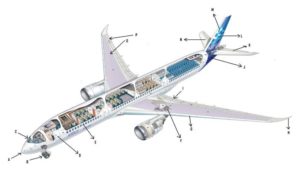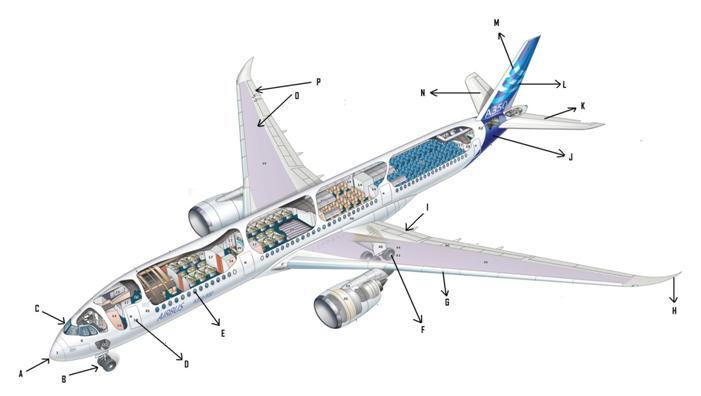Although there are many aircraft designs flying today, most of them share a common assembly of major parts that all pilots should be thoroughly aware of. Ever since the early days of aviation, an aviator’s primary training included the fundamental knowledge of what each part is called, its function and where it is located.
Each major part of a fixed-wing aircraft serves an important purpose. For example, the propeller helps move the aircraft through the air via thrust. The wings are lifting bodies which help keep the aircraft airborne. The horizontal and vertical stabilizers contain vital control surfaces; and the fuselage is a major structural component containing crew and passenger areas.
The importance of knowing each part is reinforced when you undergo flight training and student pilots are always taught the necessity of performing a good preflight check of the aircraft. Knowing the function of each component allows you to understand what looks good and what might appear abnormal. In addition, to truly understand how an airplane flies, you must first study the major components and the forces involved with flight. Airfoils are surfaces, which by design, produce lift. If you understand that concept then you’ll realize that various parts of the airplane produce lift in some form or another. The same goes for learning about each part and how it fits into the overall wonder of flight. Doctors study the body’s anatomy well before they begin treating patients. So, why wouldn’t you need to know an aircraft’s anatomy before leaving the ground for the first time?
The wings generate most of the lift to hold the plane in the air. To generate lift, the airplane must be pushed through the air. The air resists the motion in the form of aerodynamic drag. Modern airliners use winglets on the tips of the wings to reduce drag. The turbine engines, which are located beneath the wings, provide the thrust to overcome drag and push the airplane forward through the air. Smaller, low-speed airplanes use propellers for the propulsion system instead of turbine engines.
The wings have additional hinged, rear sections near the body that are called flaps. Flaps are deployed downward on takeoff and landing to increase the amount of force produced by the wing. On some aircraft, the front part of the wing will also deflect. Slats are used at takeoff and landing to produce additional force. The spoilers are also used during landing to slow the plane down and to counteract the flaps when the aircraft is on the ground. The next time you fly on an airplane, notice how the wing shape changes during takeoff and landing.
Watch today’s video for a brief visual overview of an airplane’s parts:
Video: Parts of the Plane
Using the following vocabulary list, match the lettered parts of the airplane diagram with their appropriate terminology.
| nose | wing | vertical stabilizer | fuselage | flaps |
| nose landing gear | horizontal stabilizer | rudder | empennage | leading edge |
| main landing gear | ailerons | elevator | wingtip | door |
A___________
B___________
C___________
D___________
E___________
F___________
G___________
H___________
I ___________
J ___________
K ___________
L ___________
M___________
O ___________
P ___________




